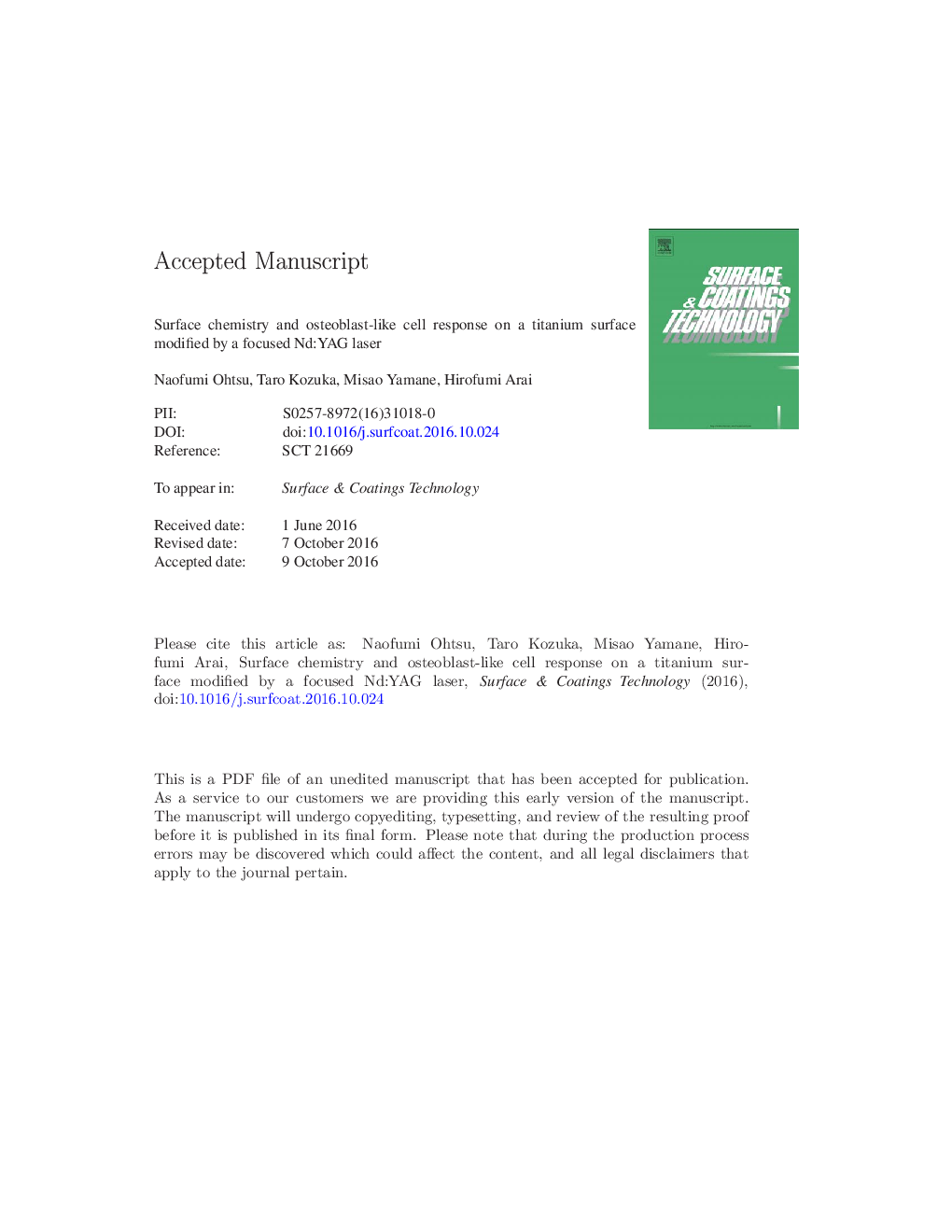| Article ID | Journal | Published Year | Pages | File Type |
|---|---|---|---|---|
| 5465255 | Surface and Coatings Technology | 2017 | 34 Pages |
Abstract
The present paper demonstrates that the cellular response on a Ti surface could be enhanced through surface treatment by an accurately focused beam of a low-power pulsed Nd:YAG laser. Focusing the beam leads to the generation of a laser-induced plasma on the target surface, which makes it possible to enhance the effect of laser irradiation. A chemically stable and thin layer of titanium dioxide (TiO2) was formed on the laser-treated substrate, while changes in the surface microstructure were hardly observed. This result indicates that the oxide formation was developed through a reaction to the plasma instead of an energy transfer from the laser to the surface. The resulting TiO2 layer suppressed the adsorption of the contaminant carbon on the Ti surface, which made it possible to maintain hydrophilicity, even after sterilization. In fact, the cellular adhesiveness and cell proliferation on the Ti surface were notably improved by the laser treatment despite the low power of 5 and 25 mJ·pulseâ 1. On the other hand, differentiation of the osteoblast-like cells was not facilitated by the laser treatment.
Related Topics
Physical Sciences and Engineering
Materials Science
Nanotechnology
Authors
Naofumi Ohtsu, Taro Kozuka, Misao Yamane, Hirofumi Arai,
